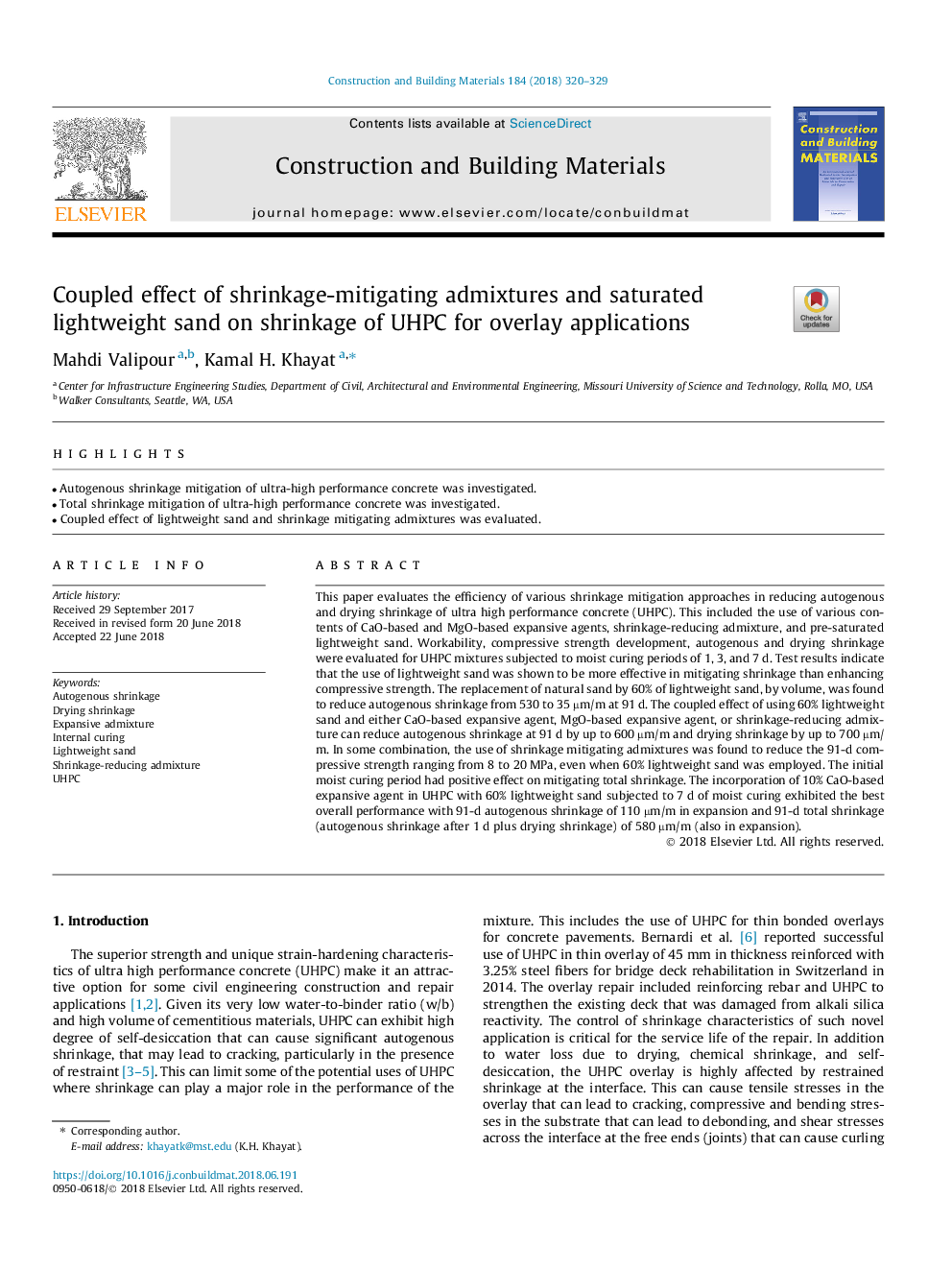| Article ID | Journal | Published Year | Pages | File Type |
|---|---|---|---|---|
| 6712018 | Construction and Building Materials | 2018 | 10 Pages |
Abstract
This paper evaluates the efficiency of various shrinkage mitigation approaches in reducing autogenous and drying shrinkage of ultra high performance concrete (UHPC). This included the use of various contents of CaO-based and MgO-based expansive agents, shrinkage-reducing admixture, and pre-saturated lightweight sand. Workability, compressive strength development, autogenous and drying shrinkage were evaluated for UHPC mixtures subjected to moist curing periods of 1, 3, and 7â¯d. Test results indicate that the use of lightweight sand was shown to be more effective in mitigating shrinkage than enhancing compressive strength. The replacement of natural sand by 60% of lightweight sand, by volume, was found to reduce autogenous shrinkage from 530 to 35â¯Âµm/m at 91â¯d. The coupled effect of using 60% lightweight sand and either CaO-based expansive agent, MgO-based expansive agent, or shrinkage-reducing admixture can reduce autogenous shrinkage at 91â¯d by up to 600â¯Âµm/m and drying shrinkage by up to 700â¯Âµm/m. In some combination, the use of shrinkage mitigating admixtures was found to reduce the 91-d compressive strength ranging from 8 to 20â¯MPa, even when 60% lightweight sand was employed. The initial moist curing period had positive effect on mitigating total shrinkage. The incorporation of 10% CaO-based expansive agent in UHPC with 60% lightweight sand subjected to 7â¯d of moist curing exhibited the best overall performance with 91-d autogenous shrinkage of 110â¯Âµm/m in expansion and 91-d total shrinkage (autogenous shrinkage after 1â¯d plus drying shrinkage) of 580â¯Âµm/m (also in expansion).
Related Topics
Physical Sciences and Engineering
Engineering
Civil and Structural Engineering
Authors
Mahdi Valipour, Kamal H. Khayat,
